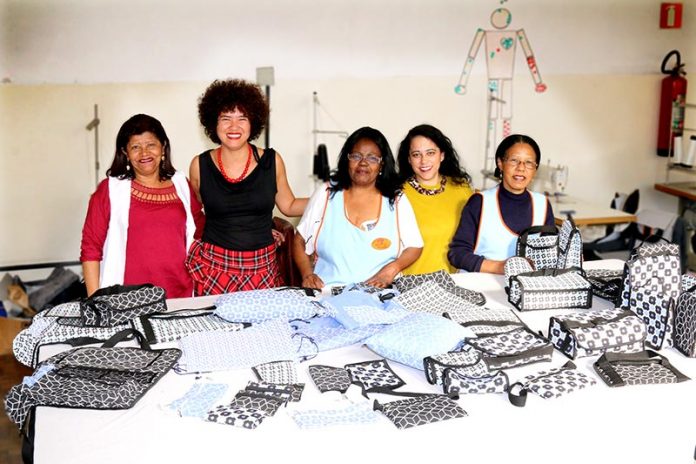Rede Asta addresses two important national issues. Firstly, the enormous amount of material value lost in landfills. Every day in Brazil, about 200,000 tons of solid waste is collected and only an estimated 3% of this is recycled. This corresponds to an annual loss of about BRL 120 billion (GBP 25 billion) in potential material value. Furthermore, national waste regulations mean that numerous material categories are not allowed to be discarded into landfills, creating a bottleneck for many companies.
Second is the issue of gender exclusion in the workplace, something that’s still very prevalent in Brazil. This means that it is harder for women to enter the job market, and when they do, their wages are much lower than men. However, according to World Bank figures women are responsible for 75% of consumer good purchases, and spend 90% of their income on family.
Consequently, Rede Asta is confident that women can be powerful drivers of inclusive economic growth, and has decided to invest in female entrepreneurship by training groups of female artisans to recover various discarded materials and transform them into valuable corporate gift collections – a market identified as worth BRL 5.8 billion (GBP 1.45 billion).
Rede Asta’s business model operates at three levels – partnership building, connecting and skill sharing.
Rede Asta establishes partnerships with hundreds of companies throughout Brazil to collect their waste materials or unused equipment. The company then offers them bespoke designs using these discarded materials to suit specific marketing purposes, such as the promotion of a current internal initiative. This scalable approach is made possible through a nationwide network of artisans, with Rede Asta acting a matchmaker to facilitate new sales opportunities.
By developing an online platform, Rede Asta aims to provide low-income community workers the tools to become more successful entrepreneurs. As well as providing affordable learning opportunities in business management and waste recovery, the platform also allows artisans to connect to their peers, divide costs, improve visibility and scale production, thus greatly improving income and the amount of materials recovered from waste streams.
Finally, Rede Asta creates impact through a collaborative working space, owned by the community workers. The space has a research lab to explore new upcycling practices, runs hands-on waste recovery workshops and provides access to tools such as sewing equipment.
Analysis:
I appreciate the elements of locality and grassroots which are present in Rede Asta’s business model. Like in models such as Etsy, their key selling point really seems to be the role they play as a platform and a connector between artists and buyers; but beyond that, they also bring in this element of reclaimed material sources. Closed loop models tend to have an “aliveness” to them, but the unique combination of elements at play in Rede Asta make this especially the case, and worth drawing inspiration from.




